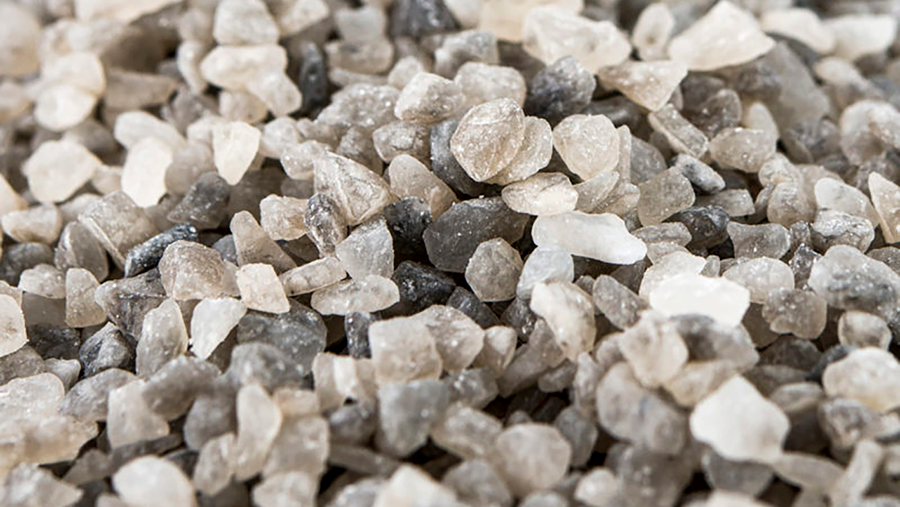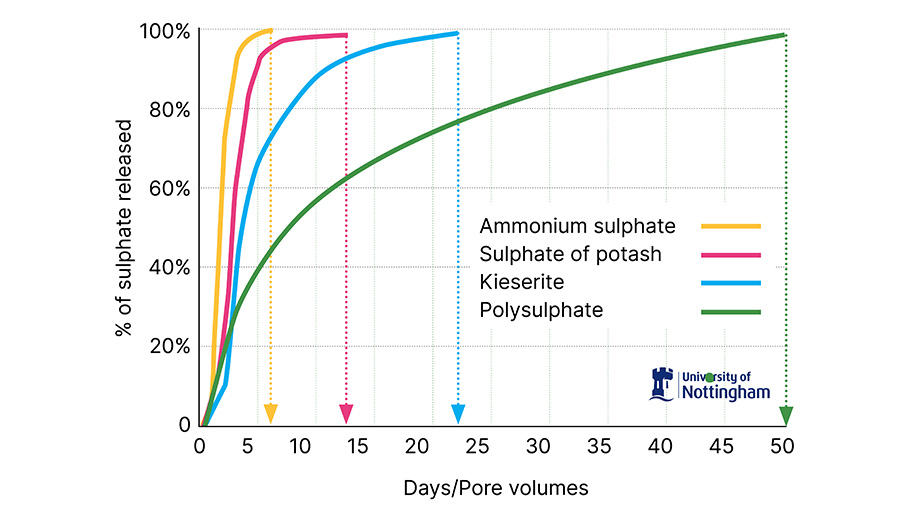Advertiser content
How to choose the best sulphur source for your crops
 © ICL UK & Ireland
© ICL UK & Ireland With many growers using the summer months to think about next year’s fertiliser requirements, focusing on how to incorporate sulphur into crop nutrition plans is one of the most important decisions to make, says ICL Growing Solutions agronomist Scott Garnett.
“Sulphur is essential in the process of nitrogen utilisation in the plant as well as for boosting grain protein, dry matter and oil content as well as promoting good crop health.
“But latest soil testing by Lancrop Laboratories shows some 97% of UK soils, and importantly 85% of arable soils, are deficient in this vital element.
“Whilst atmospheric sulphur was once abundant, control of pollution by heavy industry and other practices over recent years has now reduced this significantly, so growers need to include supplementary sulphur in their crop nutrition.
“While farmers are increasingly aware of the various types of nitrogen and the implications of their choices, sulphur is too often seen as an ‘add-on’, with few understanding or even knowing that different types of sulphur have very different effects on crop productivity and the environment.
“Without an efficient source of sulphur in the fertiliser equation, nitrogen can not only be under-utilised leading to poor crop production, it can be lost to the atmosphere or leached from the soil causing potential environmental issues.”
Environmental benefits
The time when nitrogen fertiliser needs are being considered provides the perfect opportunity to assess sulphur requirements too, with increasing numbers of UK growers and advisors specifying low carbon Polysulphate (48% SO3, 14% K2O, 17% CaO and 6% MgO) for a number of reasons, he says.
“For a start it’s a non-nitrogen multinutrient fertiliser with a nearly half of its content as sulphur.
“Not having nitrogen in is important as it allows producers to select low emission sources of nitrogen to apply rather than having both elements locked together in a fixed ratio as is the case with NS products such as ammonium sulphate.
“In fact, Rothamsted Research has calculated if all the sulphur applied to UK crops was in the form of Polysulphate with a low emission source of nitrogen applied alongside it, ammonia emissions from sulphur fertiliser applications would be cut by 90%.”

© ICL UK & Ireland
Polysulphate efficiency
Polysulphate’s simple processing, that involves just crushing and grading once mined, together with its unique mineral make-up, also give it some unique properties in the field.
University of Nottingham trials looking at soil leaching of nutrients have shown over 50% of the sulphur contained in Polysulphate is released in the first 10 days after application with the remainder available to plants over the following six to eight weeks.
This prolonged-release nature ensures nutrient availability is matched precisely to crop needs through the growing cycle.
This is in contrast to traditional ammonium sulphate, where 100% of the sulphate is released within just five to six days after application.
The sulphur provided by Polysulphate is also in the readily available sulphate form unlike elemental sulphur which cannot be taken up by plants.
Polysulphate, therefore, not only increases the efficiency of key nutrient uptake to maximise crop productivity, it also reduces the possibility of soil nutrient loss and resulting environmental consequences.
In addition to sulphur, the potassium, magnesium and calcium contained in Polysulphate are important nutrients required by all crops, too.
Even crops such as nitrogen fixing legumes, that don’t require nitrogen at all, still need these essential nutrients to maximise nitrogen utilisation. Such crops are becoming increasing important to growers in the rotation and for establishing more regenerative practices in arable and grassland production.

© ICL Boulby
Significant NUE and crop production benefits
The nitrogen use efficiency (NUE) improvement from using Polysulphate lead to significant improvements in yield and quality and this has been shown in numerous trials, Scott Garnett points out.
“UK trials have shown yield lifts of over 8 – 12% in winter wheat and as much as 33% in oilseed rape compared to the commonly used NS products.
“In leguminous crops that rely on nitrogen fixed from the air, the addition of Polysulphate has been shown to increase yields by up to 40%.
“Trials in vining peas, for example, have shown 75kg/ha of SO3 applied as 150kg/ha of Polysulphate produces 1t/ha extra yield of peas.
“Polysulphate can also deliver benefits across the food supply chain. With many sources suggesting current nitrogen fertiliser use accounts for 75% of the carbon footprint of crop production, it has a vital role to play in decarbonising UK food production.”
Polysulphate can be applied by itself or blended with a grower’s nitrogen fertiliser of choice to provide the precise N:S ratio for individual growing situations and to achieve ‘little and often’ applications if desired, he explains.
“There are also Polysulphate-based PotashpluS and PKpluS granular products that add extra potassium, or phosphorus and potassium, into the equation so specific nutrient needs can be simply accommodated.”

Left: normal fertiliser application without Polysulphate; Right; normal fertiliser application with Polysulphate © ICL UK & Ireland
Why you must include sulphur in your crop production plans
With industry reducing pollution over recent years, the atmospheric levels of sulphur seen previously are now virtually non-existent.
Organic sources of fertiliser such as farmyard manure, slurry and digestate actually contain very little useable sulphur plus there is little deposition from the air now.
Whilst providing other key nutrients, organic sources contain insufficient sulphur to make any impact on NUE, yields or crop quality.
So, if you want to benefit from the crop productivity gains possible with sulphur, you have to supplement natural sources.
Provided by
ICL are experts in crop nutrition, such as Controlled Release Fertilisers (CRF). We are also market leaders in phosphate, potash and Polysulphate® based fertilisers. We offer high quality products to help farmers increase productivity, in a more sustainable way.
